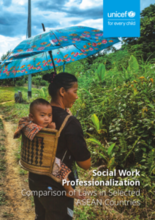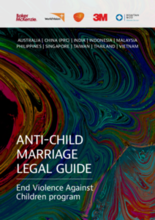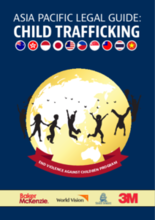demographic_data
adoption
social_work_force
key_stakeholders
Key Stakeholders
Add New DataDisplaying 1 - 10 of 57
This study compares child custody and guardianship norms in classical Islamic jurisprudence and modern codifications, focusing on Indonesia’s Compilation of Islamic Law and related laws in selected ASEAN and European countries. It finds that integrating the “best interests of the child” with Islamic legal reasoning through maqāṣid al-sharīʿah can promote child protection and gender equity, offering insights for legal reform in plural societies.
This paper provides a comparative analysis of social work professionalization in the Philippines, Thailand, Indonesia and Singapore. By examining the different approaches across the countries, policymakers will have examples of practices that have been effective elsewhere and adopt these to suit the context of Malaysia.
UNICEF Malaysia is seeking an international consultant to provide high-level technical support on alternative care, including strategy development, stakeholder engagement, advocacy, and technical assistance on de-institutionalisation and reforming of the alternative care system in Malaysia.
SELANGOR – A 23-year-old man has been sentenced to 10 years in jail for abusing several boys under his care. The sentence was handed down after Muhammad Barur Rahim Hisam pleaded guilty to four charges levelled against him.
Malaysian police have rescued 402 children and teenagers that they suspect were physically and sexually abused across 20 care homes.
This comes amid growing protests against the plan, which critics say would create a new class of stateless people.
This phenomenological study explores how five institutionalised Malay adolescents used adaptive strategies towards independent living upon being released from welfare institutions. Five 17-year-old Malay Muslim adolescents, three males and two females, were recruited via purposive sampling for a focus group discussion to gather insights into their plans and strategies to cope with life challenges after being released from their respective welfare institutions.
Children should grow up in familial settings as life in an institution could hamper their development and well-being, experts say.
This Anti-Child Marriage Guide produced by World Vision aims to empower and educate users as how to best navigate regulatory hurdles that may arise when assisting children affected by child marriage. This fourth legal guide addresses frequently asked questions relating to protecting victims of child marriage in Australia, Mainland China, India, Indonesia, Malaysia, the Philippines, Singapore, Taiwan, Thailand, and Vietnam.
This Child Trafficking Legal Guide produced by Baker McKenzie, World Vision, State Street and 3M aims to empower and educate users on how to best navigate regulatory hurdles that may arise when assisting children affected by human trafficking.





